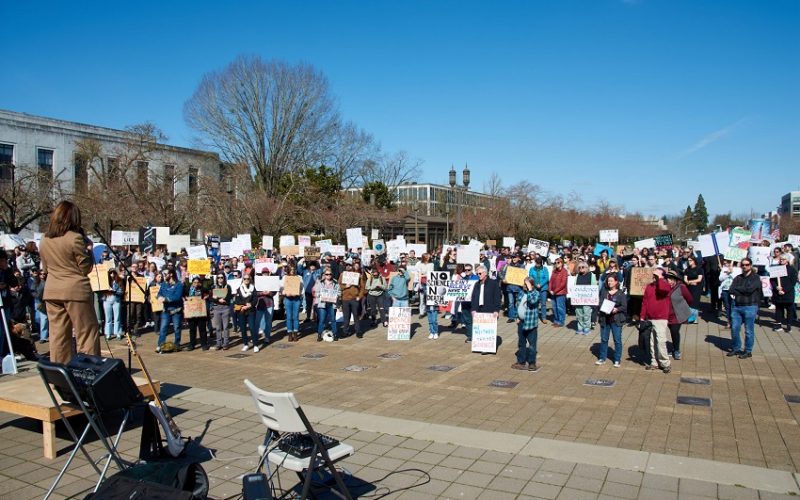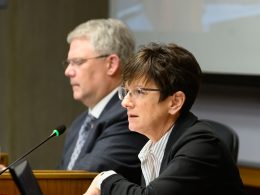Salem, OR – At least 500 passionate individuals gathered on Friday at the Capitol for the Stand Up for Science march, a powerful demonstration aimed at protesting President Donald Trump’s proposed cuts to federal funding for scientific research. The event, which drew a wide array of scientists, students, and advocates, was held in response to budget proposals that many argue could significantly hinder scientific advancement across various fields, from climate research to medical innovations.
Among the speakers was Salinas, a vocal advocate for the importance of federal investment in scientific endeavors. Addressing the crowd, Salinas underscored the critical role that government funding plays in ensuring the continued growth and success of research across the country. The speaker expressed deep concern that these cuts could not only stall scientific progress but also undermine the nation’s leadership in global innovation.
“We cannot afford to turn our backs on science,” Salinas stated passionately, drawing applause from the crowd. “The impact of these funding cuts will be felt for generations, and it is our responsibility to stand up and make our voices heard.”
The march, organized by a coalition of advocacy groups, highlighted the potential consequences of reduced funding for the National Institutes of Health (NIH), National Science Foundation (NSF), and other crucial research agencies. Protesters carried signs with slogans such as “Save Science” and “Invest in Research,” while chanting and marching around the Capitol building, calling on lawmakers to prioritize science and ensure that federal funding for research remains robust.
Several participants also expressed concerns about the broader implications of science funding cuts on education, innovation, and public health. Experts argue that many groundbreaking discoveries, from cancer treatments to climate change models, rely on sustained investment from the federal government. Without adequate funding, researchers fear that progress in these areas could stall, leaving the country vulnerable to global challenges.
The protest is part of a larger movement advocating for science policy reform and urging lawmakers to recognize the value of investing in research and development. Organizers hope the demonstration will inspire more public support and pressure lawmakers to reconsider the proposed budget cuts.
While the march focused on the Trump administration’s budget proposals, it also served as a reminder of the broader importance of science funding, regardless of political affiliation. The message was clear: science is not a partisan issue, but a vital cornerstone of the nation’s future prosperity.
As the march came to a close, Salinas and others reiterated their call to action, urging participants to continue advocating for science, not just through protests, but through active engagement with policymakers. “This fight is far from over,” Salinas concluded, “and together, we can ensure that science continues to thrive in this country.”
The Stand Up for Science march was one of many recent demonstrations in the growing movement to protect science funding, signaling a strong commitment to ensuring that research remains a priority in American politics.











